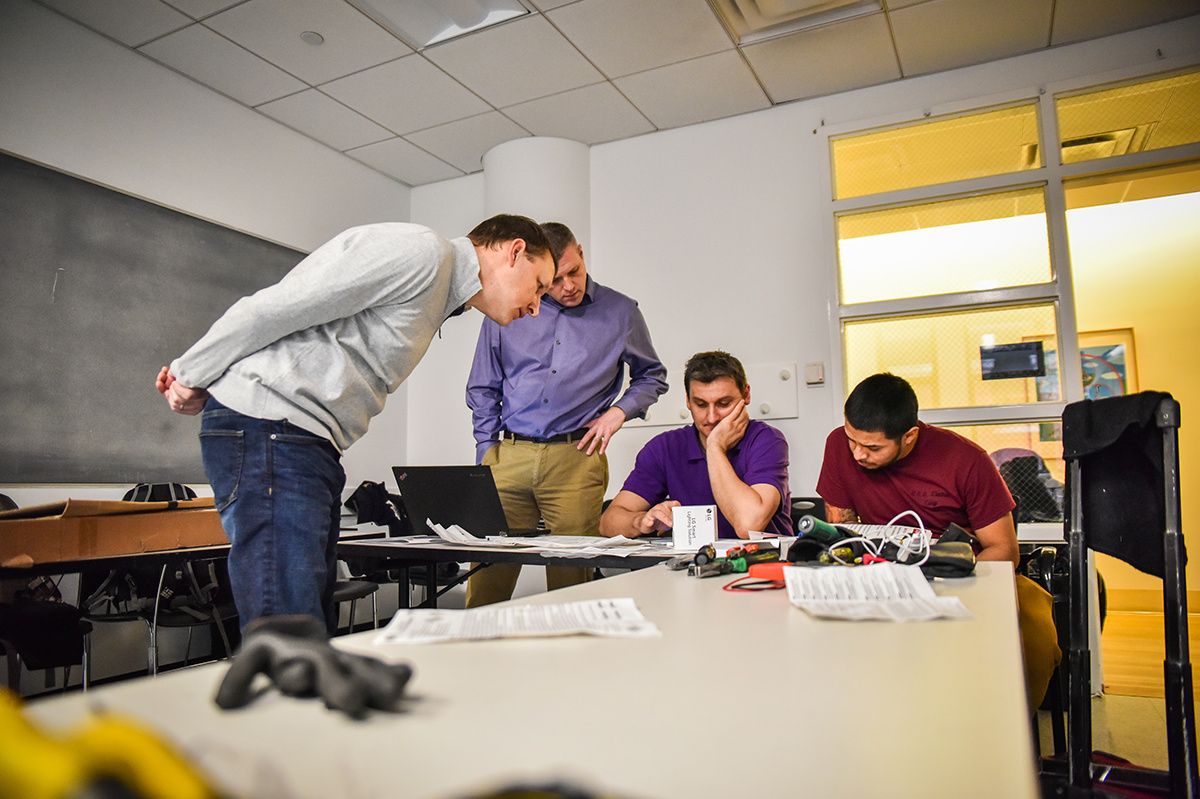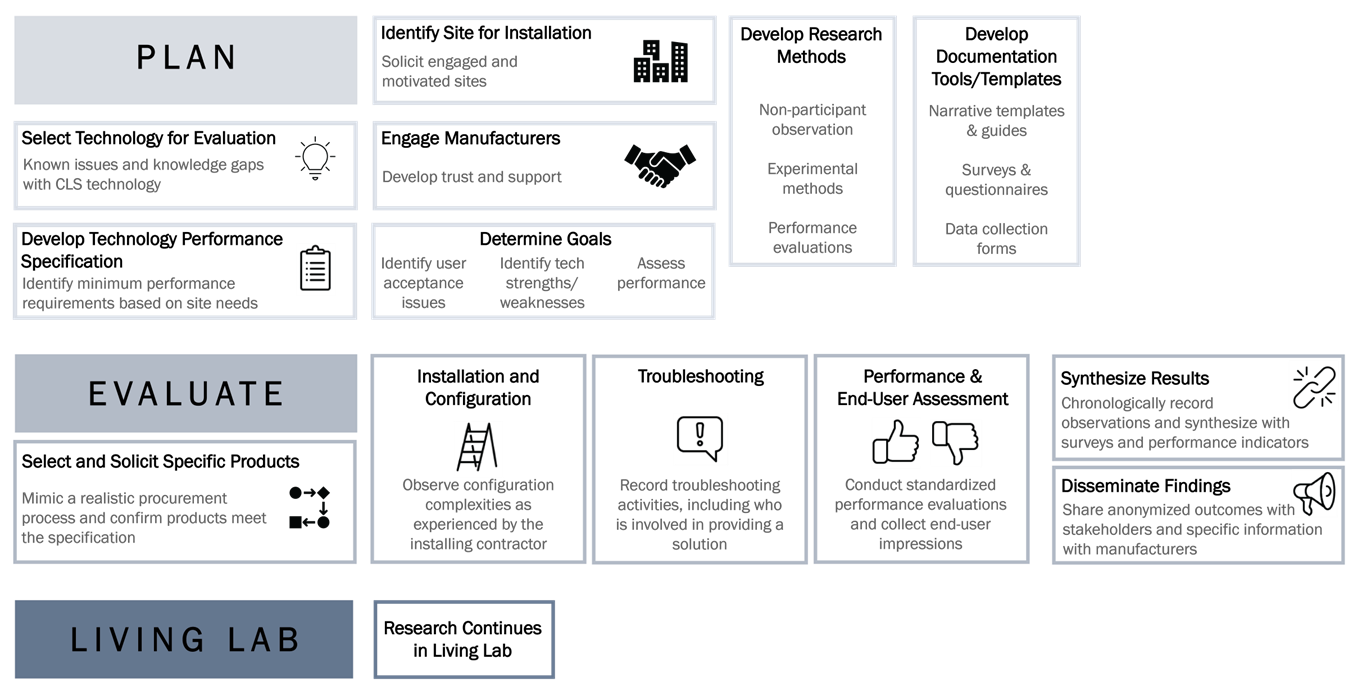Case Studies
Observational Research of Next Generation Lighting Systems

The DOE Next Generation Lighting System (NGLS) program pioneered the use of observational research for evaluating energy efficient technologies in the build environment. NGLS is organized by DOE in partnership with the Illuminating Engineering Society and the International Association of Lighting Designers and is managed by Pacific Northwest National Laboratory (PNNL).
NGLS uses non-participant, real-time observational research in conjunction with technology performance evaluations and traditional surveys to discover and document challenging human and technology intersections. Observational field-testing research on NGLS was conducted when market feedback indicated that configuration complexity was inhibiting the adoption and performance of advanced control systems and limiting a valuable source of energy savings. Observational research was successfully used to understand the processes associated with installing, configuring, using, and maintaining emerging building technologies to identify and resolve pressure points, with the goal to increase adoption rates and fully realize energy savings potential.

Tackling Roof-top Unit (RTU) Barriers with Observational Research
Retrofit RTU controls can save 25–50% of energy consumption by better matching system operation to building occupancy and outside air conditions and enabling real-time adjustments to temperature setpoints and schedules. Emerging "smart,” connected, and cloud-based service solutions have the potential to lower barriers to adoption controls for small businesses and organizations compared to traditional building automation.
But adoption of advanced RTU controls remains dismally low. Why is that the case? We propose to use observational research methods, and connections to advisers representing disadvantaged communities, to gain real-world insight into installation, integration, configuration, commissioning, and use of RTU controls, and recommend actions to address observed problems. The objective is to increase successful adoption of advanced RTU controls, including traditional retrofit and emerging internet-based solutions primarily suited for smaller commercial buildings.
PNNL, in partnership with Lawrence Berkeley National Laboratory and Oak Ridge National Laboratory, will watch as real contractors install, configure, and start-up advanced RTU controls. Technology successes as well as failures will be systematically documented, discussed, and reviewed to develop an actionable response to deployment barriers for all project stakeholders. Actions to address barriers will prioritize economic and technical accessibility for small businesses and organizations serving their communities.
